Common Carp Details
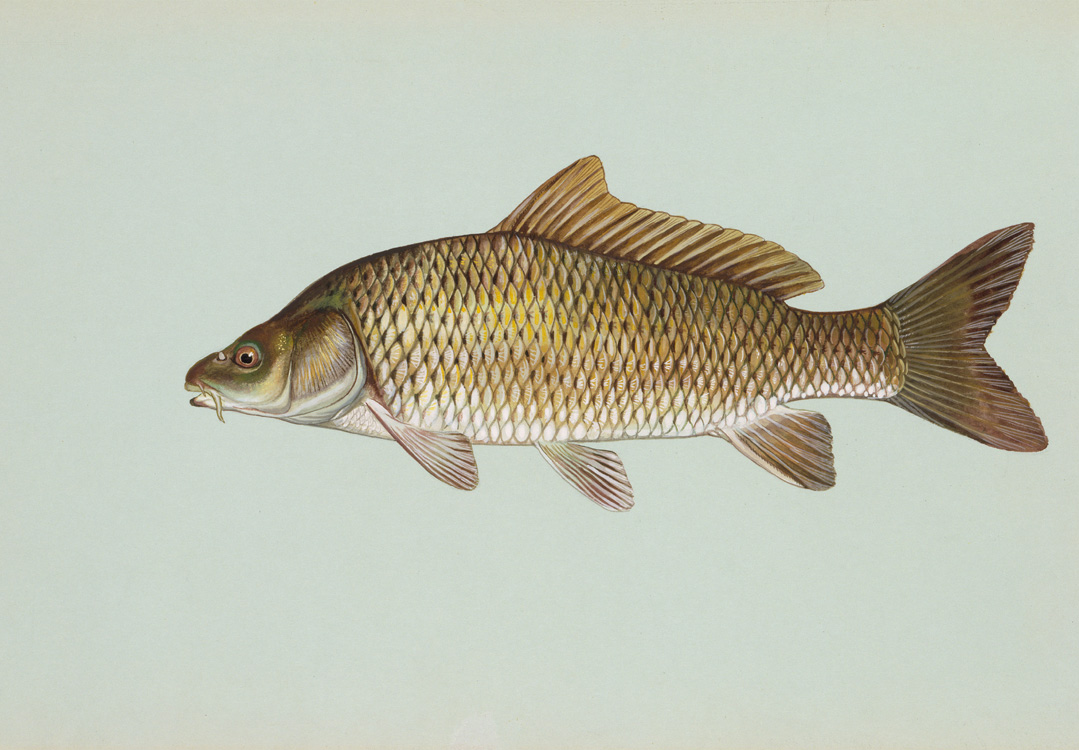
- Water Type: freshwater
- Latin Name: Cyprinus Carpio
- Common Names: Carp, German Carp, Israeli Carp, Leather Carp, Mirror Carp, Common carp
- Water Temp: 84 degrees, though will feed in most temps
- World Record: 100 lb. 8 oz (France)
- Last Modified By: bmbassachusetts on 12/03/16 08:48 PM
- Ask about Common Carp in our forum
Photos
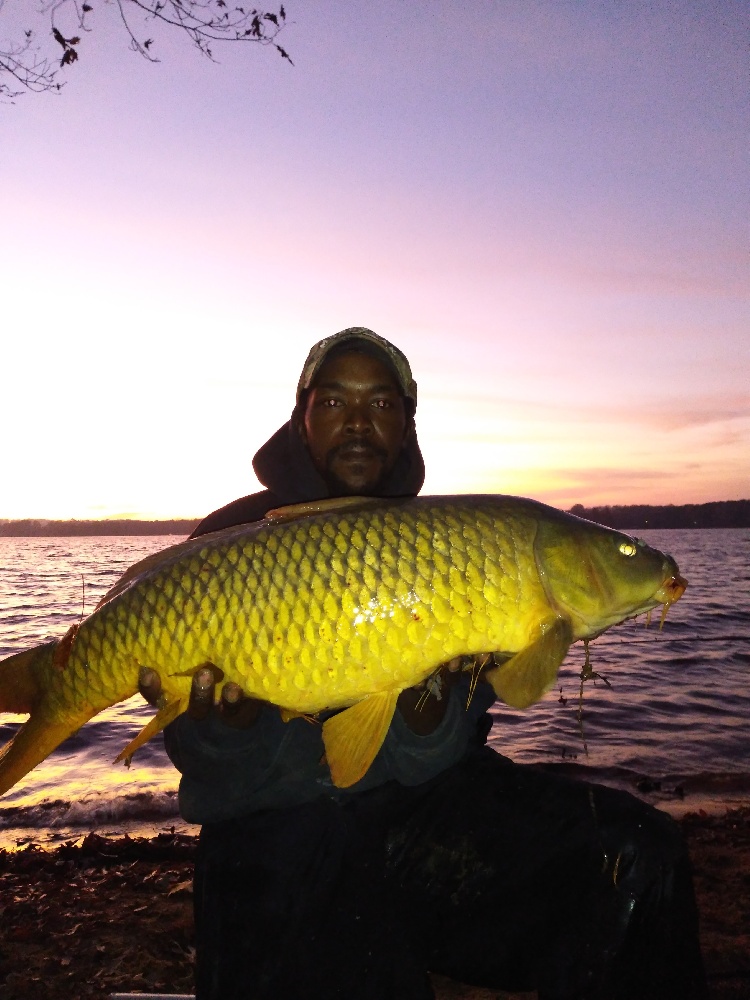
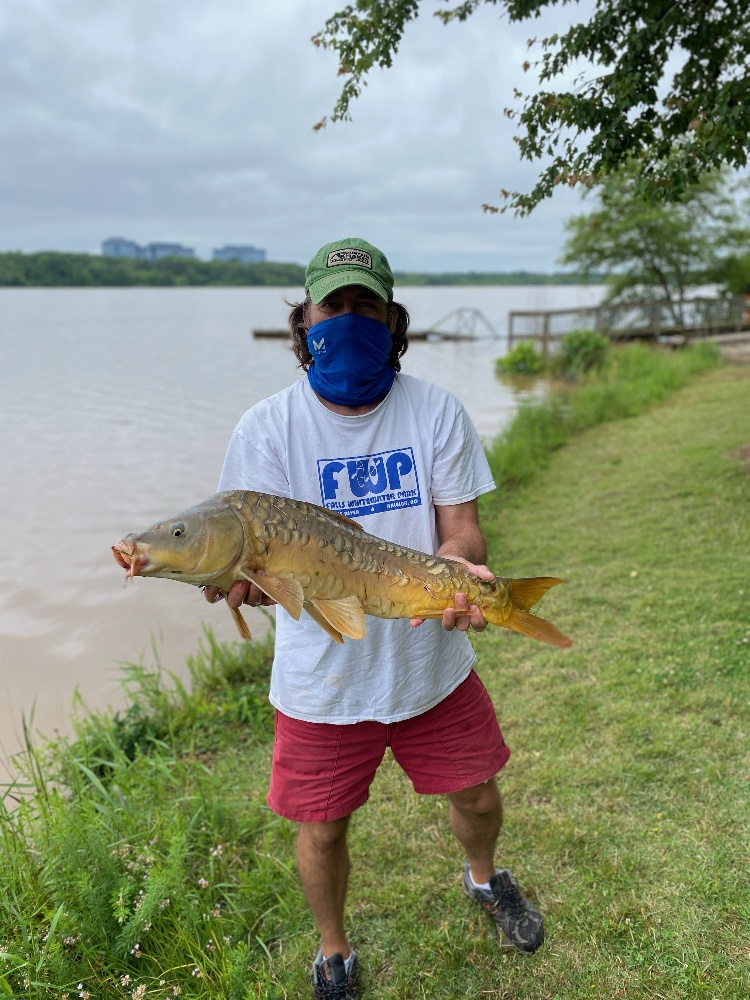
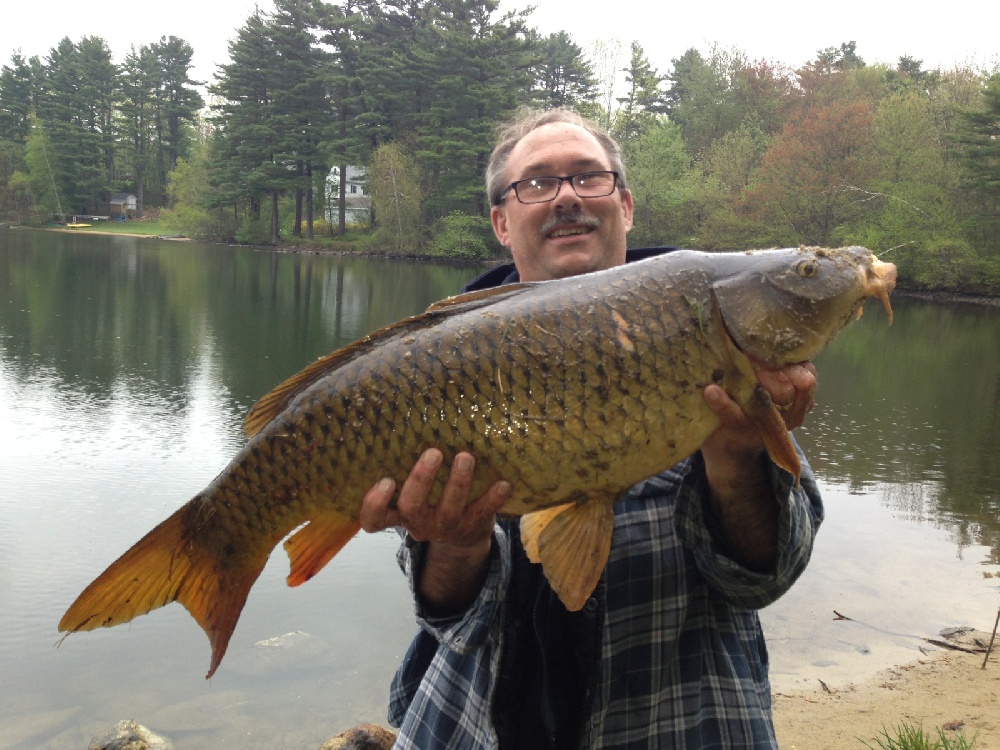

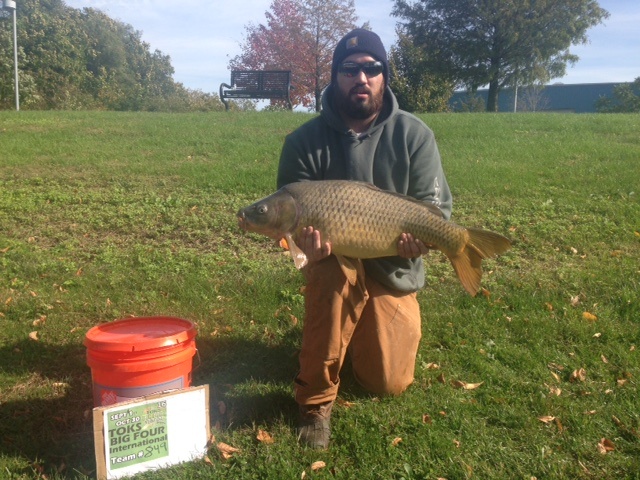
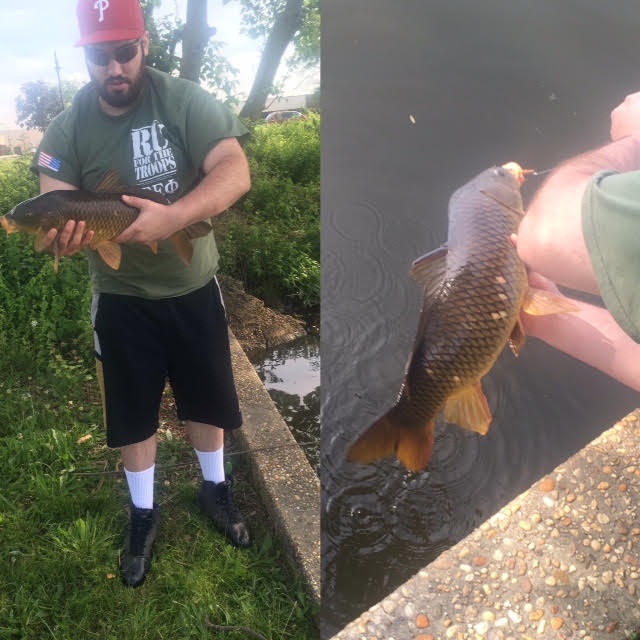
Baits and Tackle for Common Carp
Panfish Jig Check Prices
- 3 inch twister grub in white
Common Carp Description
It is commonly accepted that our relationship with carp began around 4,000 years agon when the Chinese initially discovered Carp in their Native Yellow River where they were heading upstream to spawn. The Chinese admired the carp's strength and determination so much they began to adopt them as a symbol for strength and nobility. They also began to raise carp for food and ornamentation, which is still practiced today. The Japanese were also heavily influenced by this and created carp kites and flags to show strength for their warrior class.
The original range of carp is unknown, other then they were native to Asia specifically the watersheds of the Black, Caspian, and Aral seas. Debate continues as to whether carp were native to western Europe, one side says there is no record to support that they were until the middle ages, the other side says that if they were in the Black sea they could have gone as far as Germany. Records show carp being introduced to royal ponds of Austrian nobility as early as 1227, there are records, however, of carp being brought to Greece and Italy a millennium before during the Roman empire. European monks told stories of Carp being raised in monasteries during the middle ages.
What is accepted by most is that the spread of carp really took off during the middle ages. Carp were brought to England around 1496 and were kept and fattened on milk and bread to be food for royalty. In fact King Henry XIII offered a reward to those who brought " carpes to the king" when some escaped into waterways. This is further supported by a passage in THE COMPLEAT ANGLER by Izaak Walton which stated that [carp] "hath not been long in England."
Over time the standard of living for most improved and so did the availability of carp. By 1876 Dr. Spencer F. Baird of the Smithsonian Institute and head of the newly formed United States Commission of Fish and Fisheries was receiving roughly 2,000 letters a year from immigrants who had grown accustomed to eating carp and found none here in the US. These requests came at a good time, considering the states had been heavily harvesting the native stocks of fish which were dwindling fast. Add to this the clear-cutting of lumber, draining of many wetlands, and of course the waste from many newly formed towns and mills along most waterways, the native fish were disappearing at an alarming rate.
In 1871, President Grant created a fish commission to oversee the countries fisheries. The first task it had was to find a way to replenish fish stocks. Baird wrote to Europe and received reports on many fish, most notably the carp. The mere fact that as a cash crop in Europe and Asia it rivaled grain and livestock in sales and protein. In 1874 Baird wrote a report stating the common carp would survive better then most since it ate only vegetation, which while only partially correct was enough to warrant more research. In 1876 a second report from Baird stated the carp had good table quality, rapid growth, adaptability, and harmlessness to other fish. Based on Baird's reports Congress appropriated funds to import carp from Germany.
In 1877 the commission imported 345 carp to ponds in Baltimore, the next year some of these fish were moved to Washington, D.C. where they produced 6,000 fingerlings which were shipped to 273 applicants in 24 states.
This is the official report. However, it is accepted by most historians that Julius A. Poppe from Sonoma Ca, tired of waiting for the government and in 1872 had gone to a commercial operation in Reinfeld, Germany to purchase 83 carp. He had returned by August of that year with only 5 surviving carp, which were hearty and strong. He placed the handful of 6 inch fish in a pond at his house and by the following May they had grown to 16 inches and produced over 3,000 young. As early as 1876 Poppe had a thriving carp fishery, of which he wrote to many states commissions to follow suit stating "Every fish I can possibly send to market here sells readily for one dollar a pound."
By 1883 the first reports had come in of carp being caught by hook and line in the Mississippi river, which can only be attributed to accidental release since carp were only destined at this time to prominent citizens. Dr S.P. Bartlett of Quincy Illinois replied when asked if the carp had been planted intentionally in the river with "As we value Carp to highly to experiment with them by putting them in the river, those taken must have escaped from live boxes or from ponds. It never the less demonstrates the practicality of eventually stocking our streams with this wonderful fish."
Within 2 years that is just what happened as most state commissions began actively stocking riverways and streams with Carp. By 1894 over 453,000 pounds of carp were netted in the upper Mississippi River alone. At first this was a good thing and restaurants in New York City were selling Carp in Rhine Wine Sauce, a dish which sold for more then halibut or kingfish.
Unfortunately the appeal of carp did not last long. Many people began to realize that the european carp they had loved did not taste so good now that it was grown here in America. One reason for this is that the Austrian carp farms were very particular about their carp with ponds that covered over 20,000 acres and fish that were cared for and bred for taste much like cattle or hogs. American farms on the other hand often tried to turn a quick buck and would place carp in anything that held water. These shallow ponds with stagnant muddy water produced inferior and muddy tasting fish. By the mid 1890's most states had stopped stocking carp and most farmers had moved on to more lucrative ventures. Seeing as carp were so plentiful now they sold for a mere 3-4 cents per pound.
This is also when the view of carp went downhill. People began to notice the population of carp rise while native fish like bass and sauger continued to decline. There is an old saying that two men stood on a clear-cut hillside with a pail of garbage in each hand , they looked down on the rivers and saw carp swirling happily in the mess humans had created and made a connection, albiet the wrong one, that carp were to blame for the decline of the waterways.
This claim is not totally false as carp can muddy waters and uproot vegatation searching for food. They have dominated some fisheries, crowding out bluegills and bass and increasing water turbidity to the point some sight feeding fish like walleye cannot find food. Yet these instances are relatively uncommon. Carp are found in almost every watershed in America and most still have plenty of good fishing. In most areas carp find a balance with other species. Most fisheries scientists that have studied carp agree that human impact and land use have hurt game fish much more then carp ever could. Carp are simply able to survive in much more polluted waters then other fish.----Taken from the book Fishing for Buffalo
-----------------------------------------------------------------------
Carp are a warm water species. As the water warms they become more and more active. This means they will need more and more food for energy, and what is interesting is they have basically no stomach. This means that what food they take in is quickly digested through the intestines and turned toward energy, when proper energy levels are reached it is turned to repair/growth. They continually look for and intake food, unlike fish with a normal stomach like Pike, that will eat a large meal then sit and wait while they digest it in the stomach. This is good news for carp fisherman as it means we can find carp feeding almost all times of the day/night.
There are a few methods for catching carp. for bottom fishing there is two main schools, European and North American, though now a days they are mixing so much the separation is slowly passing away. European is typically using a hair rig ( see carp forums for a tutorial on how to tie) which places the bait just a bit ahead of the hook and allows wary carp to intake it without fear of the hook, initially, then a large weight (2oz +) on a bolt rig. The rod is suspended horizontally on two banksticks and fished with a bite n run reel or open bail allowing line to come off the rod easily when a carp initially runs. They also lean toward longer rods being usually in the 12 foot range.
North Americans usually use a hook bait or pack bait ( see carp forums for a recipe or two). A pack bait is a dough like mix that breaks down quickly in water leaving a cloud of goo, with one pick up on the hook in the middle (corn pops work well) of it. They implore smaller weights using the pack as added casting weight. They usually use smaller rods in the 7-9 foot range, propping them on one stick or holder more vertically. Again light drag, open bail or bite n run reels are sued to let the fish run. Many Paylakers however tend to be line watchers. This means that by watching the line they can tell if a carp has taken the bait and will rip the rods up to set the hook. This has lead to the common North American pay lake saying "How they Ripping?"
Both schools of thought tend to use similar baits, Maize/corn being among the top baits of all time. Europeans tend toward Boilies which is a boiled dough ball and particles like maize, NA tend toward pack or dough baits and particles like corn. Both sides tend to chum or feed swims ahead of time and just before in order to draw fish in ( keep in mind this is not legal everywhere, always check first).
Carp can normally be found in water 2-10 feet in depth, usually near some form of cover, though they will feed and cruise over large areas they will tend to congregate in specific spots. Overhanging and fruit bearing trees will often hold fish, as will pylons of bridges, breaks in currents and large weed beds. These areas tend to gather food flowing in the water and carp will take full advantage of that fact. In still water you can usually see carp jump occasionally, or they will create spots of bubbles where they are feeding through the bottom muck to find food releasing trapped air. These can be very good signs of carp in your swim. -Bedlem
-----------------------------------------------------------------------
It flourishes in the Connecticut River, Lower Merrimack River and a few lakes and ponds including Mascoma Lake, Horseshoe Pond in Merrimack and Twin Ponds in Nashua. It thrives best in warm, quiet or slow-moving water where there is an abundance of aquatic vegetation. It is an extremely tough fish as it is able to tolerate low-oxygen conditions and high levels of pollution. Carp feed on almost everything including algae, plant roots, insects, snails, worms and fish eggs. They compete heavily with game fishes and waterfowl since they up-root plants, destroying great quantities of vegetation. These fish may be taken with hook-and-line baited with bread balls, oatmeal balls, worms, boilies, commercial carp baits as well as many others and are exciting to catch as they put up a strong fight and are one of the biggest freshwater species. You may also take these fish by Bow-and-Arrow with cord attached, from the Merrimack River and Mascoma Lake only, which is a highly prized activity by archers. When properly prepared, Carp is a good table fish. The Carp is 1 of the largest members of the minnow family. 3 to 5 pounds is a very common weight while a 10 to 15 pound is not uncommon. The state record Carp for NH(by hook-and-line) is 36.50" 33 lbs. caught out of the Connecticut River in Hinsdale, NH on 10/28/2007 by Fintan Moore III, while the state record for Carp in NH(by bow-and-arrow) is 34.00" 18 lbs. and 15.84 oz. shot on the Merrimack River in Manchester, NH on 6/29/1997 by Todd Rivard.